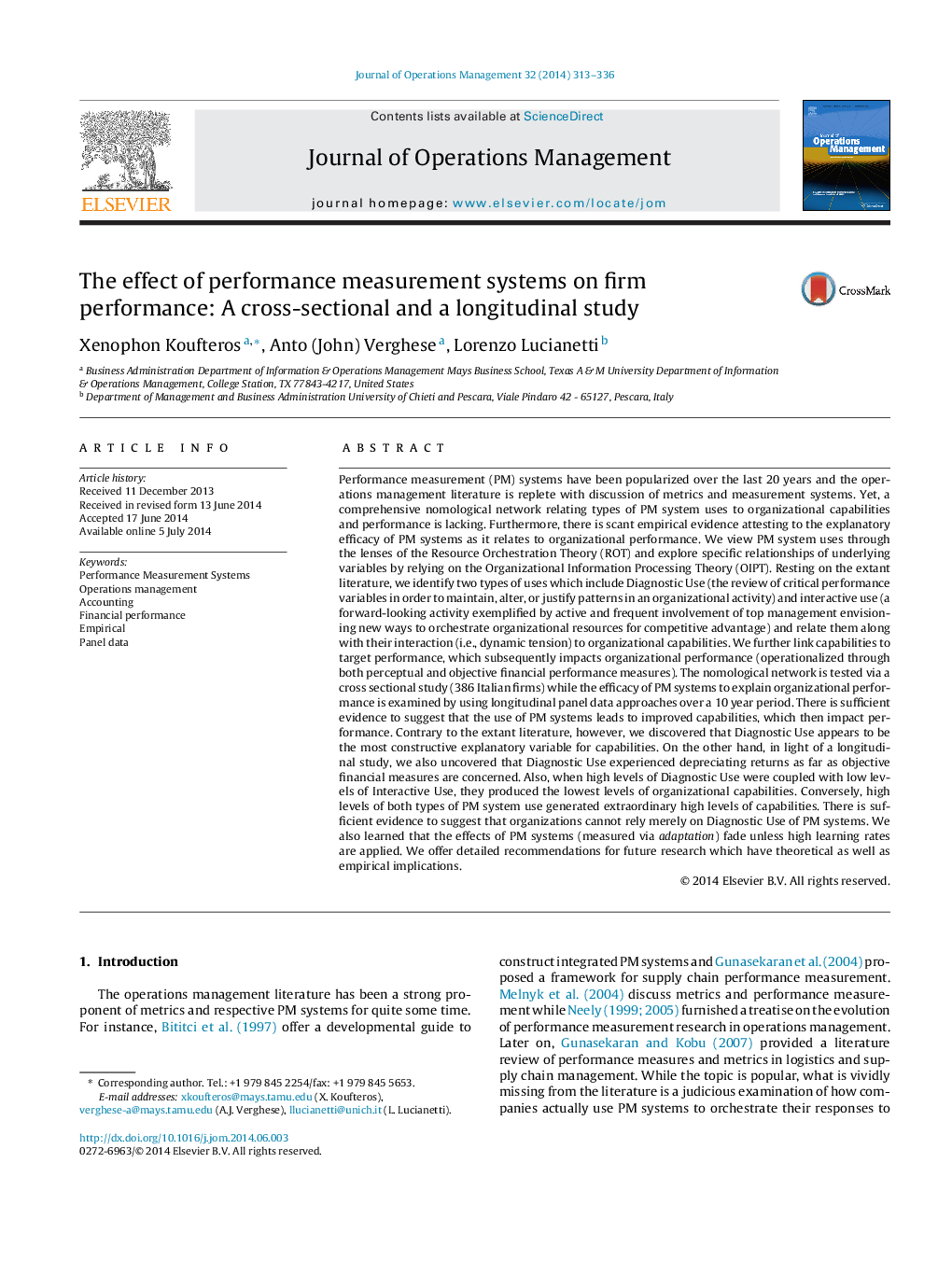| Article ID | Journal | Published Year | Pages | File Type |
|---|---|---|---|---|
| 1031753 | Journal of Operations Management | 2014 | 24 Pages |
Performance measurement (PM) systems have been popularized over the last 20 years and the operations management literature is replete with discussion of metrics and measurement systems. Yet, a comprehensive nomological network relating types of PM system uses to organizational capabilities and performance is lacking. Furthermore, there is scant empirical evidence attesting to the explanatory efficacy of PM systems as it relates to organizational performance. We view PM system uses through the lenses of the Resource Orchestration Theory (ROT) and explore specific relationships of underlying variables by relying on the Organizational Information Processing Theory (OIPT). Resting on the extant literature, we identify two types of uses which include Diagnostic Use (the review of critical performance variables in order to maintain, alter, or justify patterns in an organizational activity) and interactive use (a forward-looking activity exemplified by active and frequent involvement of top management envisioning new ways to orchestrate organizational resources for competitive advantage) and relate them along with their interaction (i.e., dynamic tension) to organizational capabilities. We further link capabilities to target performance, which subsequently impacts organizational performance (operationalized through both perceptual and objective financial performance measures). The nomological network is tested via a cross sectional study (386 Italian firms) while the efficacy of PM systems to explain organizational performance is examined by using longitudinal panel data approaches over a 10 year period. There is sufficient evidence to suggest that the use of PM systems leads to improved capabilities, which then impact performance. Contrary to the extant literature, however, we discovered that Diagnostic Use appears to be the most constructive explanatory variable for capabilities. On the other hand, in light of a longitudinal study, we also uncovered that Diagnostic Use experienced depreciating returns as far as objective financial measures are concerned. Also, when high levels of Diagnostic Use were coupled with low levels of Interactive Use, they produced the lowest levels of organizational capabilities. Conversely, high levels of both types of PM system use generated extraordinary high levels of capabilities. There is sufficient evidence to suggest that organizations cannot rely merely on Diagnostic Use of PM systems. We also learned that the effects of PM systems (measured via adaptation) fade unless high learning rates are applied. We offer detailed recommendations for future research which have theoretical as well as empirical implications.
